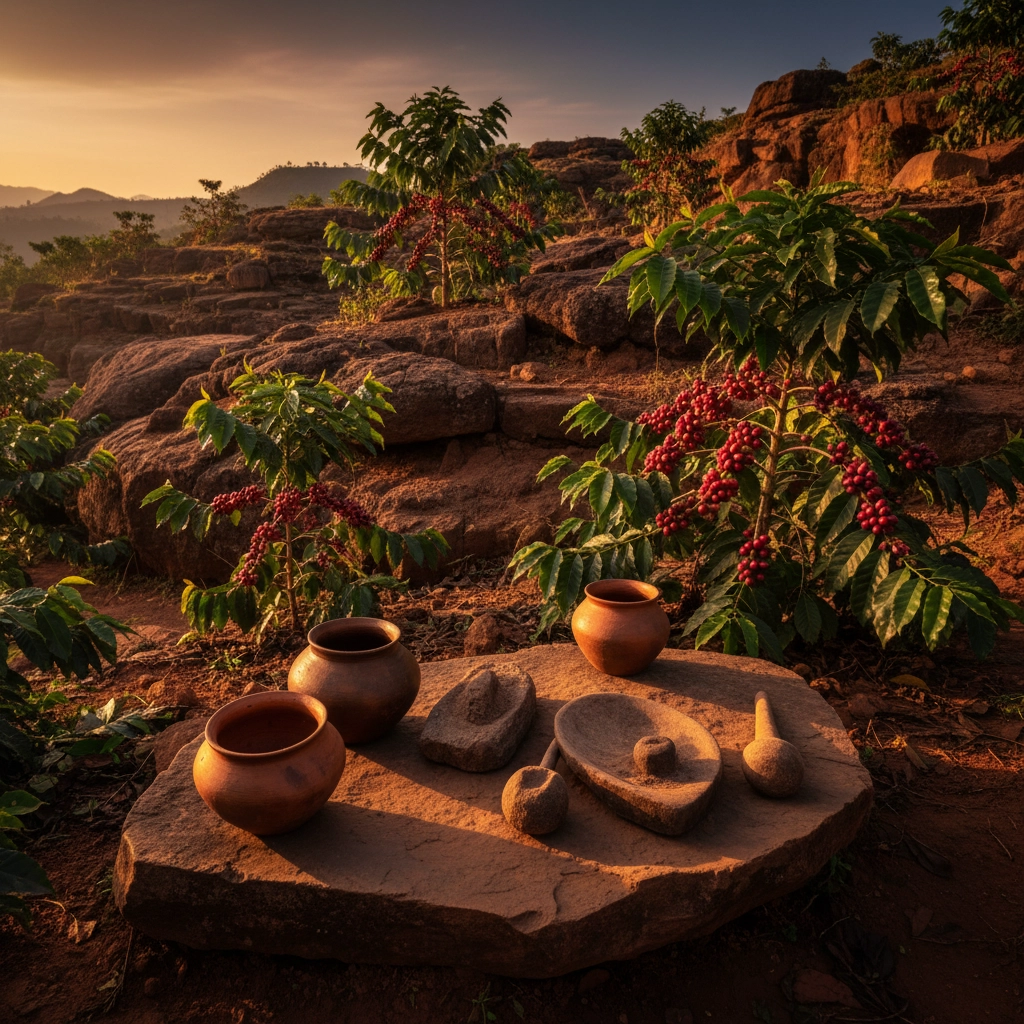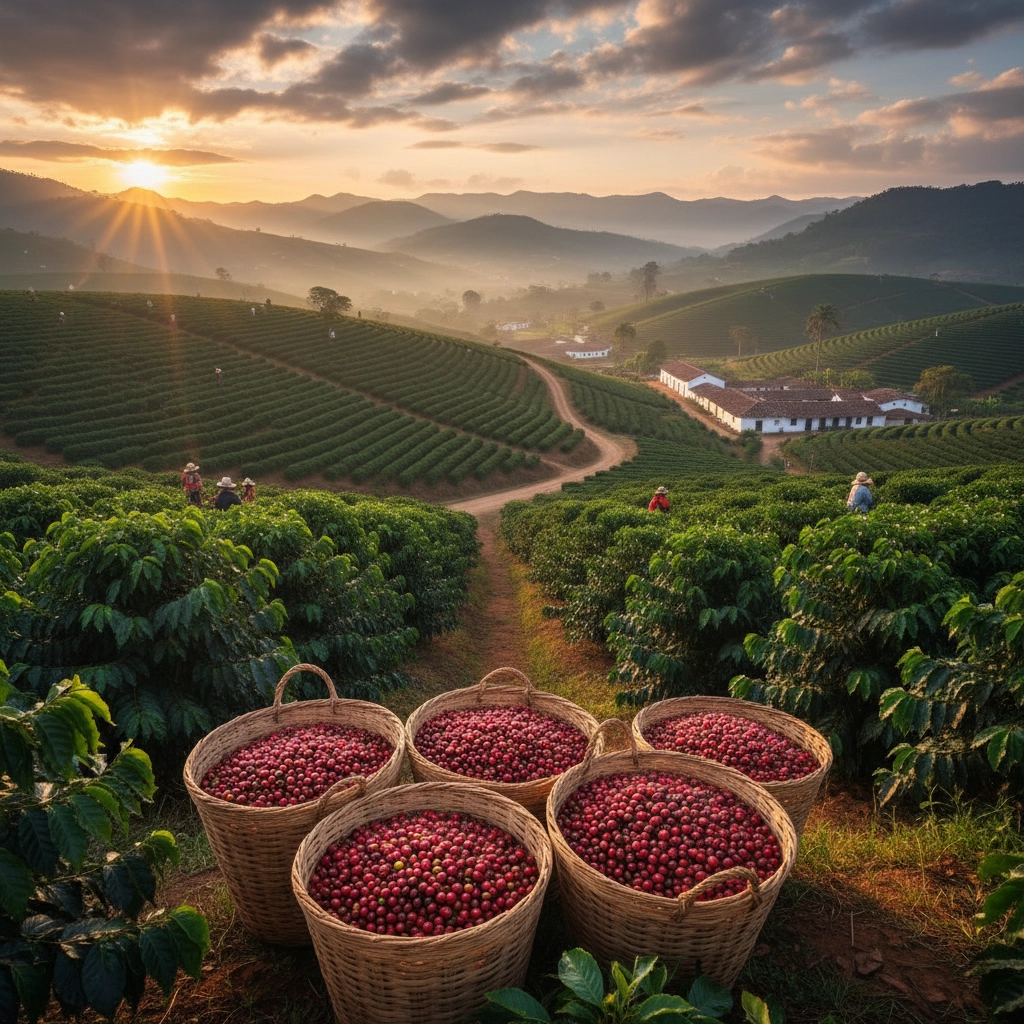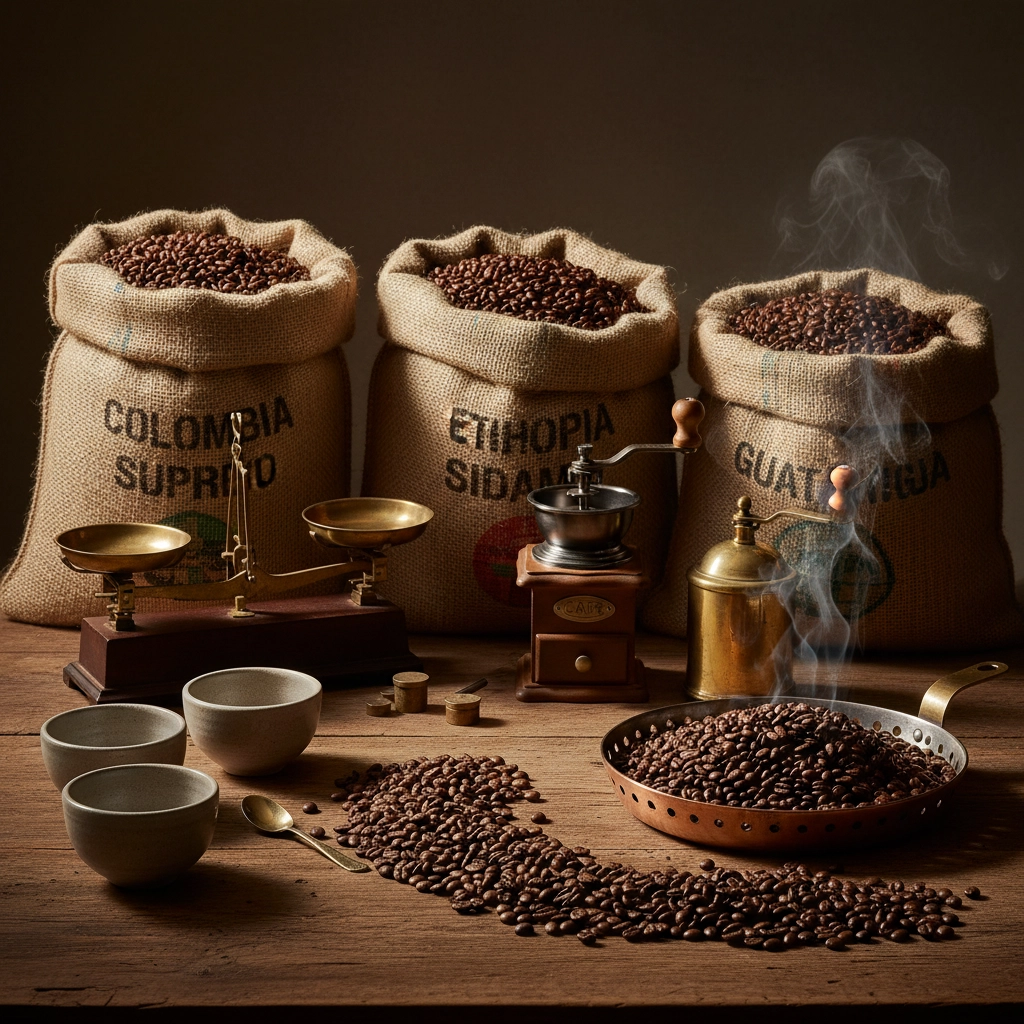Ever wondered how that perfect cup of coffee made its way from ancient Ethiopian highlands to your morning routine? The story of coffee is one of adventure, controversy, and transformation that spans over a thousand years. From mysterious goat herders to global empires, coffee's journey is as rich and complex as the flavors we love today.
The Ethiopian Beginning: Where It All Started
Coffee's story begins around 575 AD in the highlands of Ethiopia, where the indigenous Galla people first discovered the energizing power of coffee berries. But they weren't brewing lattes, they were actually grinding the beans and mixing them with animal fat to create energy bars for long journeys. Pretty different from our modern Mexican Chocolate blends, right?
The most famous legend tells of Kaldi, a goat herder around 850 AD, who noticed his goats getting unusually energetic after eating certain red berries. Curious (and probably a bit tired himself), Kaldi tried the berries and felt the same boost. When local monks heard about this magical fruit, they started using it to stay alert during nighttime prayers. And just like that, coffee culture was born.

The Arab Innovation: Creating the First Real Coffee
The transformation from berry to beverage happened in the Arab world around the 10th century. Arab traders didn't just consume coffee, they revolutionized it. They developed the roasting and grinding techniques that created what they called "qahwa," the ancestor of our modern coffee.
By 1000 AD, coffee houses were popping up across the Middle East. These weren't just places to grab a quick cup, they were social hubs where people gathered to discuss politics, conduct business, and share stories. Think of them as the original co-working spaces, but with much stronger coffee and probably more interesting conversations.
The Arabs were incredibly protective of their coffee trade. They even boiled the beans before exporting them to prevent other regions from growing their own plants. Talk about protecting your business secrets!
Coffee Conquers Europe: From Suspicious Brew to Social Phenomenon
Coffee's arrival in Europe in the 16th century was anything but smooth. Italian merchants brought it to Venice around 1600, but many Europeans were suspicious of this dark, bitter drink associated with the Ottoman Empire. Some religious advisors even called it "Satan's drink."
Fortunately, Pope Clement VIII had better taste. After trying coffee himself, he declared it acceptable for Christians, essentially giving coffee the papal seal of approval. This "baptism" of coffee opened the floodgates for European coffee culture.

The first European coffee house opened in Venice in 1683, and London quickly became famous for its coffee house culture by 1750. These establishments became known as "penny universities" because for the price of a cup of coffee (one penny), you could engage in stimulating conversation with poets, merchants, and intellectuals. It was during this time that coffee houses became associated with different flavors and preparations, though nothing quite like our modern French Vanilla or Cinnamon Hazelnut blends.
The Colonial Coffee Boom: Going Global
The 18th century marked coffee's transformation into a global commodity. European colonizers realized they could grow coffee in their tropical colonies, breaking the Arab monopoly. Gabriel de Clieu, a French naval officer, made a legendary journey to Martinique in 1720 with a single coffee plant. Despite pirates, storms, and water shortages, he nursed that plant to the Caribbean, where it eventually produced 18,680 coffee trees.
The Dutch were equally ambitious, introducing coffee to Java (yes, that's where the slang term comes from), while the Spanish brought it to the Philippines and the Americas. By 1788, the Caribbean island of Saint-Domingue was producing half the world's coffee.

This period also saw the development of different regional coffee preferences and preparations. Various spices and flavorings were added to coffee depending on local tastes: the early ancestors of today's flavored coffees like Pumpkin Spice, which has become synonymous with fall comfort.
Brazil Takes the Crown: The Coffee Empire
Brazil's rise to coffee dominance began in the 1720s when coffee plants were smuggled from French Guiana. By 1852, Brazil had become the world's largest coffee producer: a title it still holds today. The country's vast plantations and ideal growing conditions made it the coffee powerhouse we know today.
Brazil's success changed everything about coffee production. The scale of Brazilian plantations meant coffee became more affordable and accessible to ordinary people worldwide. This democratization of coffee helped establish it as a daily ritual rather than a luxury beverage.
The late 19th and early 20th centuries also saw the development of new coffee processing methods and the introduction of flavored varieties. Sweet additions like Caramel became popular as coffee culture evolved to include dessert-like flavors alongside traditional preparations.
The Modern Coffee Revolution: From Commodity to Culture
The 20th century brought massive changes to coffee culture. Vietnam emerged as the world's second-largest producer in 1999, overtaking Colombia and bringing unique processing methods and flavors to the global market. Meanwhile, the specialty coffee movement began emphasizing quality, origin, and unique flavor profiles.

Coffee houses evolved from simple meeting places to sophisticated cafés offering dozens of preparation methods and flavor combinations. The introduction of espresso machines, French presses, and pour-over methods gave coffee lovers unprecedented control over their brewing experience.
Today's coffee culture embraces both tradition and innovation. We can trace a direct line from those Ethiopian goat herders to modern artisanal roasters, yet we also enjoy flavors that would have amazed coffee's early adopters. Seasonal specialties, unique roasts, and carefully crafted blends have made coffee more diverse and accessible than ever before.
Coffee's Cultural Impact: More Than Just a Drink
Throughout its history, coffee has been much more than a beverage: it's been a catalyst for social change, economic development, and cultural exchange. Coffee houses were instrumental in the Age of Enlightenment, serving as meeting places for revolutionaries, writers, and thinkers. The Boston Tea Party might never have happened if colonists hadn't switched from tea to coffee as a patriotic statement.
Coffee also played a crucial role in the Industrial Revolution, providing workers with the energy needed for long factory shifts. The "coffee break" became institutionalized in many cultures, creating daily rituals that persist today.

From Bean to Your Cup: The Timeless Journey Continues
Despite all our technological advances, many aspects of coffee production remain remarkably similar to historical methods. Coffee is still hand-picked in many regions, and the basic roasting process hasn't changed much since those early Arab innovations. This connection to tradition is part of what makes coffee so special: each cup connects us to centuries of human innovation and cultural exchange.
The next time you enjoy your morning coffee, whether it's a simple black brew or a flavored specialty blend, remember that you're participating in a tradition that spans continents and centuries. From Ethiopian goat herders to modern coffee enthusiasts, we're all part of coffee's incredible ongoing story.
Coffee's journey from wild berry to global phenomenon shows us how a simple discovery can transform the world. And with new growing regions, processing methods, and flavor innovations constantly emerging, coffee's story is far from over. Who knows what the next chapter will bring to your morning cup?




